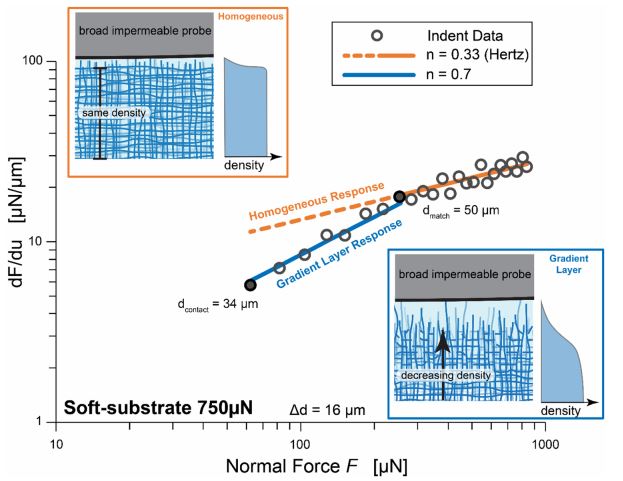Hydrogels are inherently slippery — we know this from touching jello and sliding on banana peels. It’s been shown in many of our prior publications, as well as publications from the Sawyer group (University of Florida), the Spencer group (ETH), the tribology group at Imperial College, and many others. However, making polyacrylamide hydrogels in the lab in a mold creates a solid hydrogel that we put into a water bath in the refrigerator before we use it. This equilibration stage can exhibit bulk swelling if the composition allows it, but what happens at the surface? The polymer chains will swell, and do swell, if they have a direction to go with less confinement! This causes a softer surface layer than the bulk, and we postulate that it is this skin layer that is responsible for the low friction. It’s related to the composition and mold conditions, but we think that it exists on every sample to some extent.
In this paper we use probe-based techniques in situ with fluorescence microscopy to discover the thickness and mechanics of this softer surface layer. Check out our paper here:
https://link.springer.com/content/pdf/10.1007/s11340-021-00704-x.pdf
